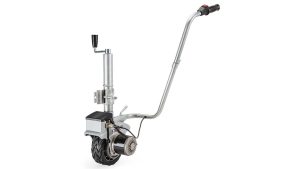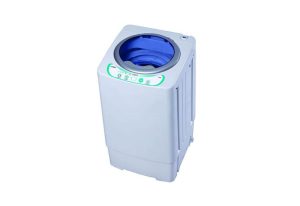For RV enthusiasts, nothing beats the feeling of hitting the open road and exploring new places with a caravan in tow. However, before embarking on your next adventure, it’s essential to make sure your caravan’s battery is in good condition. A faulty or dead battery can quickly turn a fun trip into a nightmare.
In this article, we’ll go over some simple steps you can take to check the health of your caravan battery.
Step 1: Perform a Visual Inspection
Before checking the battery’s actual health, it’s important to perform a visual inspection. Start by locating the battery, which is usually located near the caravan’s front, behind a protective cover. Check for any signs of physical damage, such as cracks or leaks, as these can be indications of a more serious problem. Also, look for corrosion on the battery terminals, which can impede the flow of electricity.
Step 2: Test the Battery Voltage
To test the battery voltage, you’ll need a voltmeter or a multimeter, both of which can be purchased at any hardware store. Set the meter to the DC voltage range, and touch the probes to the battery terminals. The reading should be between 12.4 and 12.7 volts. If the reading is lower than 12.4 volts, the battery may be discharged and will need to be charged before testing again.
Step 3: Load Test the Battery
A load test is a more comprehensive way to determine the health of a battery. It involves applying a load to the battery to simulate its performance under normal operating conditions. To do a load test, you’ll need a load tester, which can be rented or purchased. Connect the tester to the battery terminals and follow the manufacturer’s instructions. A healthy battery should be able to maintain a voltage above 9.6 volts for 15 seconds under load.
Step 4: Check the Electrolyte Levels
Most caravan batteries are lead-acid batteries, which contain a liquid electrolyte that can evaporate over time. If the electrolyte level is low, it can cause the battery to fail prematurely. To check the electrolyte levels, locate the battery caps and remove them. Use a flashlight to inspect the levels in each cell. The levels should be between the minimum and maximum marks on the battery case. If the levels are low, add distilled water until they reach the maximum level.
Step 5: Charge the Battery
If your caravan battery is discharged or not holding a charge, it will need to be charged before you can use it. There are several ways to charge a caravan battery, including using a battery charger, a solar panel, or the caravan’s engine.
Using a Battery Charger
A battery charger is a device that sends a current of electricity to the battery to replenish its charge. To charge your caravan battery with a charger, follow these steps:
- Connect the charger to a power source.
- Attach the positive (red) charger clamp to the positive battery terminal and the negative (black) clamp to the negative terminal.
- Turn on the charger and wait for it to complete the charging process. This can take several hours, depending on the battery’s capacity and how low the charge is.
Using a Solar Panel
A solar panel can be an excellent option for charging your caravan battery when you’re off-grid. To charge your battery with a solar panel, follow these steps:
- Install the solar panel on the roof of your caravan or on a nearby stand.
- Connect the solar panel to a charge controller, which regulates the current flowing from the solar panel to the battery.
- Connect the charge controller to the battery using the appropriate cables.
- Monitor the charge level to ensure that the battery is not overcharged or undercharged.
Using the Caravan’s Engine
If you’re on the move and need to charge your battery, you can use the caravan’s engine to do so. To charge your battery with the caravan’s engine, follow these steps:
- Start the engine and let it run for a while.
- Connect the positive (red) battery cable to the positive battery terminal and the negative (black) cable to a ground point on the caravan.
- Allow the engine to run until the battery is charged.
When charging your caravan battery, it’s essential to follow the manufacturer’s instructions and safety precautions. Overcharging or undercharging the battery can cause damage and reduce its lifespan. Additionally, it’s important to monitor the charge level to ensure that the battery is not overcharged or undercharged. By taking these steps, you can ensure that your caravan battery is ready to power your adventures for years to come.
Conclusion
Checking the health of your caravan battery is an essential part of RV maintenance. By following these simple steps, you can ensure that your battery is in good condition and ready for your next adventure. Performing regular battery checks can also help you identify problems early on, which can save you time, money, and frustration in the long run. Remember to always follow the manufacturer’s instructions and safety precautions when handling caravan batteries. Safe travels!








